Yuki-Onna ‘Lady Of The Snow’: A Female Demon And Symbol Of Death In Japanese Mythology
A. Sutherland - AncientPages.com - Yuki-Onna or the ‘Lady of the Snow’ is an evil spirit (yōkai) lurking around and waiting for people lost in a snowstorm. She is a female demon and a symbol of death in Japanese mythology.
Yuki-onna is far from being kind, attractive and benevolent and her attributes are not unlike that of a vampire.
How Does Yuki-Onna Look Like And Where Does She Come From?
Yuki-onna, also called ‘yuki joro’ (snow woman), ‘yuki anesa’ (snow sister), ‘yuki banba’ (snow baba) and ‘ yuki hime’ (snow princess), was once a pregnant woman who was not helped during the snowstorm.
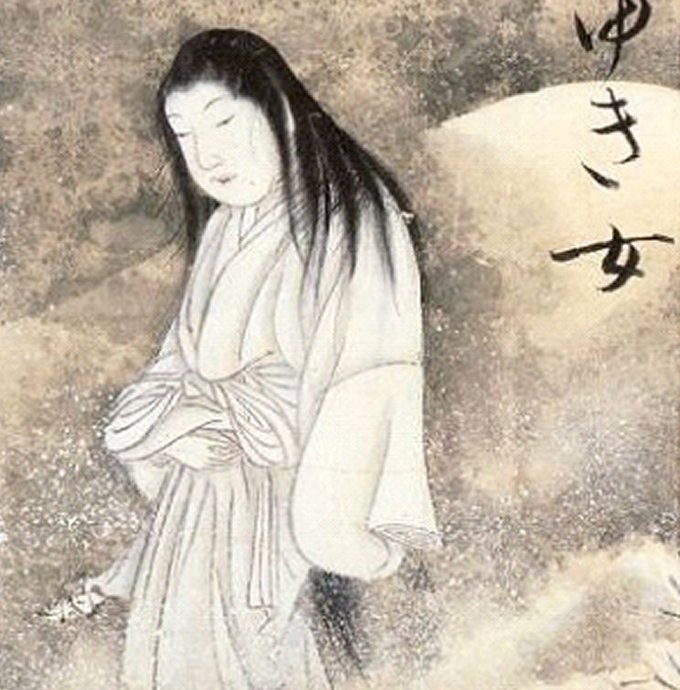
Yuki-onna, the snow woman from the Hyakkai-Zukan. source
Unable to find shelter, she was covered with snow on the mountainside. Dying slowly from the cold, she was very unhappy that no one wanted to help her and simply left her to die.
Yuki-onna appears on snowy nights as a tall, beautiful woman with long black hair and blue lips. Her extremely pale, almost transparent skin makes her almost invisible to the snowy landscape and to her victims as well. Despite her unusual beauty, she looks ghastly and eerie, and her eyes can terrify mortals. Sometimes, she is described as dressed in kimono and occasionally she even appears naked.
She floats across the snow, leaving no footprints. In some versions of Yuki-onna tales, she has no feet, which in Japanese beliefs means she is a ghost.
She can disguise herself into a cloud of mist or snow if threatened.
In legends, Yuki-onna is ‘onryo’, is an evil ghost driven by vengeance, believed to be capable of harming and even killing. She takes revenge on people who did not help her in need.
Even in different regions of Japan, there was an ancient belief in Yuki-onna, an evil and very deceptive demon. She is particularly dangerous for children when darkness falls and snow is accumulating on the ground. It is important that parents do not let their children outside. Legends say that during the snowstorm, the wind carries the laments and painful cries of the victims.
Legend About Yuki-onna And Two Woodcutters
A long time ago, there lived two woodcutters, Minokichi and Mosaku. Minokichi was young and Mosaku was very old.
One winter day, they could not come back home because of a snowstorm. They found a hut in the mountain and decided to sleep there. On this particular evening, Minokichi woke up and found a beautiful lady in white clothes. She breathed on old Mosaku and he was frozen to death.
The dangerous Japanese snow woman Yuki-Onna is a symbol of death. Credit: Yokai Wiki
She then approached Minokichi to breathe on him, but stared at him for a while, and said, "I thought I was going to kill you, the same as that old man, but I will not because you are young and beautiful. You must not tell anyone about this incident. If you tell anyone about me, I will kill you."
Several years later, Minokichi met a beautiful young lady, named Oyuki (Yuki = "snow") and married her. She was a good wife. Minokichi and Oyuki had several children and lived happily for many years. Mysteriously, she did not age.
One night, after the children were asleep, Minokichi said to Oyuki: "Whenever I see you, I am reminded of a mysterious incident that happened to me. When I was young, I met a beautiful young lady like you. I do not know if it was a dream or if she was a Yuki-onna..."
After finishing his story, Oyuki suddenly stood up, and said "That woman you met was me! I told you that I would kill you if you ever told anyone about that incident. However, I can't kill you because of our children. Take care of our children..."
Then she melted and vanished without a trace. No one saw her again.
Updated on November 25, 2021
Written by – A. Sutherland - AncientPages.com Senior Staff Writer
Copyright © AncientPages.com All rights reserved. This material may not be published, broadcast, rewritten or redistributed in whole or part without the express written permission of AncientPages.com
Expand for referencesReferences:
Hadland D.F. Myths & Legends of Japan
A.B. Mitford A. B. Tales of Old Japan
More From Ancient Pages
-
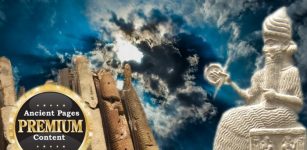 The Sumerian King Who Received A Divine Tablet With Secrets Of The Gods And Changed History Of Mesopotamia
Featured Stories | May 30, 2021
The Sumerian King Who Received A Divine Tablet With Secrets Of The Gods And Changed History Of Mesopotamia
Featured Stories | May 30, 2021 -
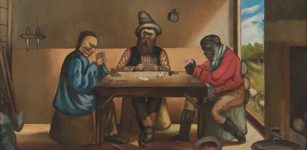 How Gold Rushes Helped Make The Modern World
Featured Stories | Aug 1, 2019
How Gold Rushes Helped Make The Modern World
Featured Stories | Aug 1, 2019 -
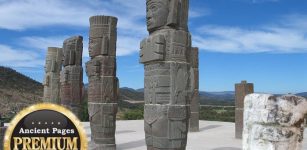 Secret Ancient Knowledge Of The Toltecs Examined
Civilizations | Aug 16, 2019
Secret Ancient Knowledge Of The Toltecs Examined
Civilizations | Aug 16, 2019 -
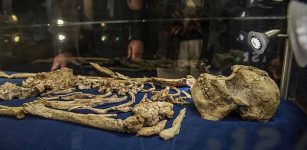 ‘Little Foot’ Is An Entirely New Species Of Early Human – Researchers Say
Archaeology | Jan 3, 2019
‘Little Foot’ Is An Entirely New Species Of Early Human – Researchers Say
Archaeology | Jan 3, 2019 -
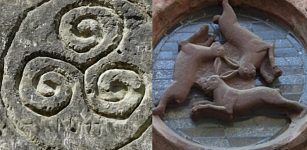 Triskelion – Millennia Old Traditional Symbol Used In Many Cultures Around The World
Ancient Symbols | Dec 13, 2018
Triskelion – Millennia Old Traditional Symbol Used In Many Cultures Around The World
Ancient Symbols | Dec 13, 2018 -
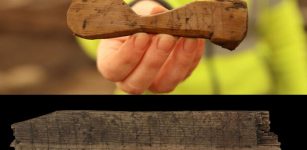 Rare Runic Inscriptions Engraved On Bone And Wood Discovered In Oslo, Norway
Archaeology | Feb 15, 2022
Rare Runic Inscriptions Engraved On Bone And Wood Discovered In Oslo, Norway
Archaeology | Feb 15, 2022 -
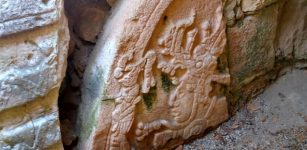 Dzibilchaltún: One Of The Most Ancient Mayan Centers In Northwest Yucatan, Mexico
Civilizations | Feb 2, 2016
Dzibilchaltún: One Of The Most Ancient Mayan Centers In Northwest Yucatan, Mexico
Civilizations | Feb 2, 2016 -
 Mysterious Gympie Pyramid: Evidence Of An Ancient Lost Civilization In Australia?
Civilizations | Feb 13, 2020
Mysterious Gympie Pyramid: Evidence Of An Ancient Lost Civilization In Australia?
Civilizations | Feb 13, 2020 -
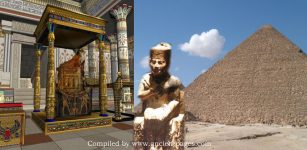 Why Should There Be An Iron Throne Inside The Cheops’ Pyramid?
Archaeology | Apr 16, 2018
Why Should There Be An Iron Throne Inside The Cheops’ Pyramid?
Archaeology | Apr 16, 2018 -
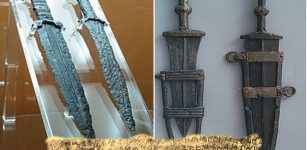 Celtiberians: Intriguing Martial Culture And Their Skilled Warrior Infantry
Civilizations | Mar 29, 2023
Celtiberians: Intriguing Martial Culture And Their Skilled Warrior Infantry
Civilizations | Mar 29, 2023 -
 Mysterious Skeleton Of Unusual Lady Anchoress Of York Barbican Discovered By Archaeologists
Archaeology | Feb 7, 2023
Mysterious Skeleton Of Unusual Lady Anchoress Of York Barbican Discovered By Archaeologists
Archaeology | Feb 7, 2023 -
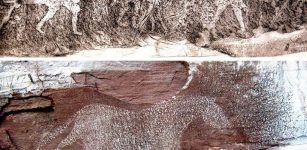 Sunduki – ‘Home Of The Gods’ – One Of The World’s Oldest Astronomical Observatories
Civilizations | Oct 4, 2015
Sunduki – ‘Home Of The Gods’ – One Of The World’s Oldest Astronomical Observatories
Civilizations | Oct 4, 2015 -
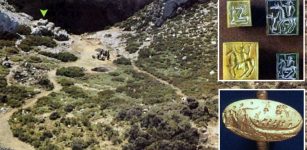 Sophisticated Lenses Of Minoans Discovered In The Sacred Idaion (Ideon) Cave
Civilizations | May 31, 2017
Sophisticated Lenses Of Minoans Discovered In The Sacred Idaion (Ideon) Cave
Civilizations | May 31, 2017 -
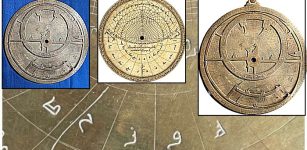 Rare Eleventh-Century Astrolabe Unearthed Recently Sheds Light On Islamic-Jewish Scientific Exchange
Scripts, Paintings & Inscriptions | Mar 4, 2024
Rare Eleventh-Century Astrolabe Unearthed Recently Sheds Light On Islamic-Jewish Scientific Exchange
Scripts, Paintings & Inscriptions | Mar 4, 2024 -
 Has The Legendary Viking Stronghold Jomsborg Finally Been Found?
Archaeology | Jun 3, 2023
Has The Legendary Viking Stronghold Jomsborg Finally Been Found?
Archaeology | Jun 3, 2023 -
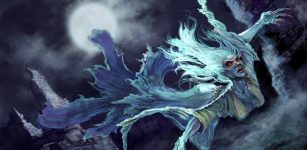 Mystery Of The Banshee – Is The Celtic Death Messenger Linked To The Tuatha De’Dannan Race?
Celtic Mythology | Oct 25, 2015
Mystery Of The Banshee – Is The Celtic Death Messenger Linked To The Tuatha De’Dannan Race?
Celtic Mythology | Oct 25, 2015 -
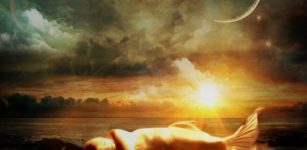 Native American Legend Of Apotamkin Teaches Children Obedience
Featured Stories | May 14, 2019
Native American Legend Of Apotamkin Teaches Children Obedience
Featured Stories | May 14, 2019 -
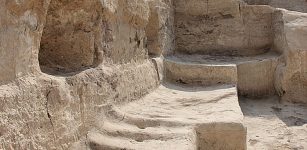 Ancient Adobe Throne Found At Aslantepe, An Acient Hittite Site, Turkey
Civilizations | Aug 29, 2015
Ancient Adobe Throne Found At Aslantepe, An Acient Hittite Site, Turkey
Civilizations | Aug 29, 2015 -
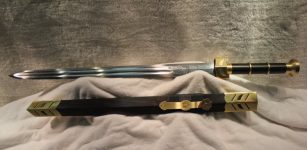 Ancient History Of Chinese Swords
Featured Stories | Aug 20, 2018
Ancient History Of Chinese Swords
Featured Stories | Aug 20, 2018 -
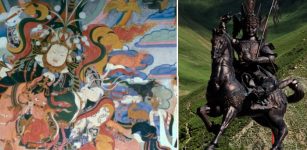 Legendary Epic Of King Gesar Who Descended From Heaven And The Ancient Tarna Monastery
Featured Stories | Nov 20, 2021
Legendary Epic Of King Gesar Who Descended From Heaven And The Ancient Tarna Monastery
Featured Stories | Nov 20, 2021

